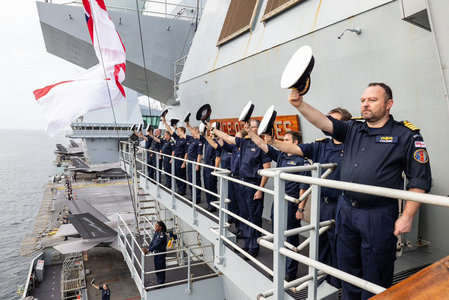
New Delhi — As strategic currents shift across the Indo-Pacific and tensions grow in the Indian Ocean, India is steadily expanding its maritime footprint, according to a report by India Narrative.
The report, authored by Colonel B.P. Katju (retd), highlights how the Indian Navy’s recent initiatives go far beyond traditional naval exercises, signalling a new phase of assertive maritime diplomacy.
In August, Indian and Philippine warships conducted their first-ever joint patrol in the South China Sea, underscoring solidarity with Southeast Asian nations amid escalating regional tensions.
Soon after, INS Nistar, an indigenous vessel, joined Singapore’s multinational submarine rescue exercise, which featured 12 navies, including China and Japan. Meanwhile, INS Sahyadri made a port call at Kemaman, Malaysia, as part of India’s extended Indo-Pacific deployment.
On the western flank, India held its first joint naval exercise with Greece following Prime Minister Narendra Modi’s visit to Athens — a development seen as a counterbalance to the growing Turkey-Pakistan cooperation, particularly Ankara’s reported support for Islamabad during Operation Sindoor.
“Amid growing turbulence in the Indian Ocean and shifting alliances across the wider Indo-Pacific, the Indian Navy is visibly expanding its maritime reach — from the Mediterranean Sea in the west to the South China Sea in the east,” Katju wrote. “This assertive naval diplomacy comes at a time when external powers are stepping up activity in India’s maritime neighbourhood, testing New Delhi’s balance between engagement and vigilance.”
India’s increasing network of defence partnerships was also visible in the Konkan exercise, where the UK’s aircraft carrier HMS Prince of Wales joined the Indian Navy in the western Indian Ocean. While such collaboration strengthens India’s global naval profile, it also revives debate about the AUKUS alliance, which some Indian strategists view as a parallel military bloc operating outside India’s strategic frameworks.
The report notes that the Indian Ocean has become a theatre of competing influences. China’s so-called “research vessels” continue to dock in Sri Lanka and the Maldives, often suspected of surveillance activity. Recently, the US, Japan, and Australia have also sent similar ships, raising a delicate question for India — how to respond when the vessels belong not to rivals, but to partners.
Adding to the regional complexity, Turkey has been supplying drones and warships to Pakistan and the Maldives. Against this backdrop, India is pushing ahead with Project 77, a ?40,000-crore initiative to build nuclear-powered submarines domestically. The Navy plans to commission two submarines armed with 800-km range missiles by 2036–37.
Katju concluded that India’s strategic intent is clear: “From the Mediterranean to the South China Sea, New Delhi’s naval engagements are not just demonstrations of reach — they are statements of intent. For a nation long seen as the anchor of the Indian Ocean, the message is unmistakable: India is no longer just watching the tides — it is steering them.”
With inputs from IANS